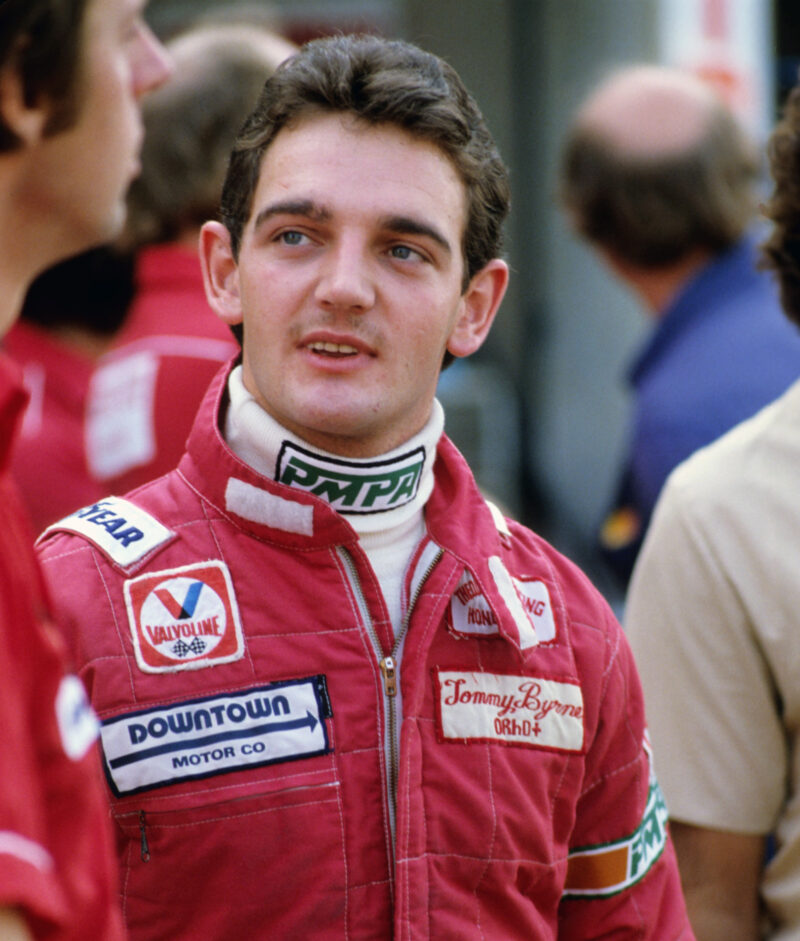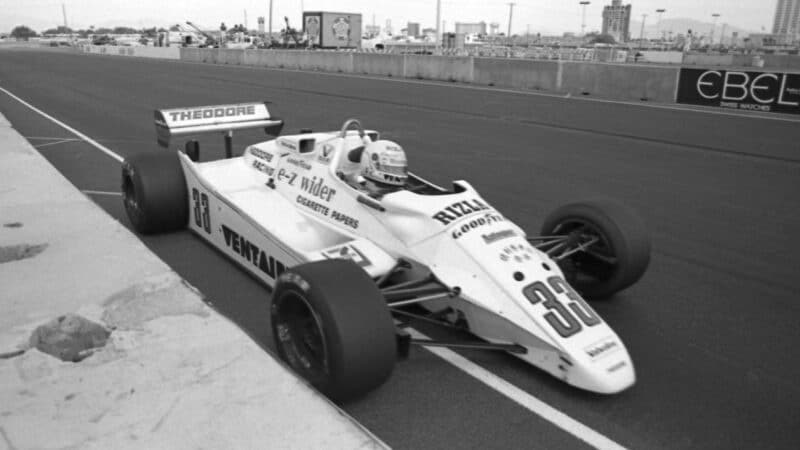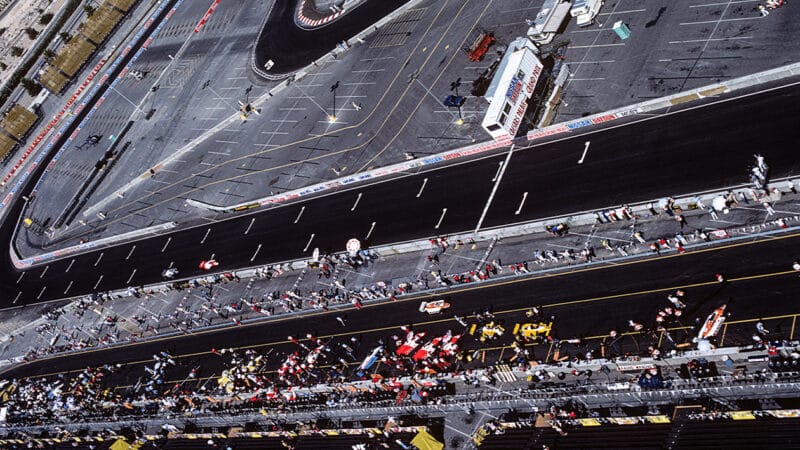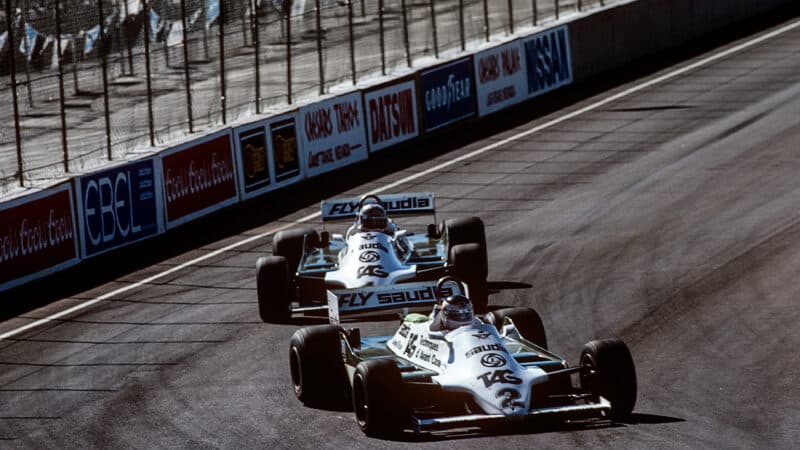That edge between the drivers was just one part of a very complex human dynamic at work within Williams. Jones had informed Frank Williams very late in the day that he was retiring at the end of the year. Jones and Williams were incredibly close, had risen to prominence together after separate years on the margins for each of them. Jones’s decision not only hurt Frank but its late notice made him furious, as he felt he had only a very restricted pool of top talent to choose from as a replacement. All the big names were already signed up. He eventually settled on Keke Rosberg who’d spent the previous two seasons in the uncompetitive Fittipaldi team. So there was a lovely symmetry when a year later Rosberg clinched the title for Williams at Caesar’s Palace.
That could have been one plot line for the ’82 race. If Netflix had travelled down to the back of the grid, it would have found another great one. The little Theodore team was running a very uncompetitive machine on the financial margins. Several drivers had tried it, but none could lift it from the back. The nearest anyone had come was when the rookie Tommy Byrne – fitting in grands prix in between trying to win the British F3 championship – went 13th-fastest in the Austrian Grand Prix warm up. But something had broken in the car before the race and he couldn’t repeat such form. He was becoming increasingly angry and frustrated at comments from within the team that the lack of form was down to him being inexperienced. “They said to me if Keke Rosberg was in the car they’d be winning races,” he recalled when I was co-authoring his book Crashed & Byrned many years later. “Which was simply ridiculous. The car was miles off.”

1982 race was Tommy Byrne’s last GP
DPPI
The Vegas race was Byrne’s third grand prix. He’d qualified 27th of the 33 entrants, 30 of which would start. Here’s how he described things in the book. “My mentor John McCambridge had started bringing his friend Stan – another car dealer from London – to my races. Stan began to get into it in a big way, bringing along his friends. They began hiring circuits and having their own little race series with their road cars, giving each other trophies for the best accidents. Stan loved being around the motor racing scene and became my minder; he’d be by my side carrying my helmet and gear, generally being there and giving me support. He was there at Vegas when I walked through the lobby of the hotel in my racing suit. I hated seeing drivers posing in their race suits and here I was doing the same – because the paddock was just outside the hotel. But that didn’t stop me from being embarrassed as everyone looked…
“I was embarrassed just being at the back. In everything I’d done I’d always won. Off the start I passed my Formula Ford ‘buddy’ Raul Boesel and later I got by Manfred Winkelhock too but I was pushing like crazy and after 40 laps I tagged one of the walls and broke the suspension. Actually, the race leader Michele Alboreto was coming to lap me and I was distracted watching my mirrors. When I looked up I was on the dust and on the way into the wall.
“Afterwards back at the garage someone said something they shouldn’t about it and I didn’t react well. I’d had it with this team of disbelieving bastards… I might have thrown a chair or two. I parted by telling them to turn up at Silverstone and watch me drive the McLaren.”

Byrne’s charge was ended by the close walls of the Caesars Palace circuit
Ron Eisenberg/Getty Images
He was referring to the test given by Marlboro to the top three finishers in the Marlboro British F3 championship. At the time of the Vegas race he’d yet to clinch that title but it was between him and Quique Mansilla. Because Byrne had missed a few F3 rounds which clashed with grands prix, he needed to perform in the final three races, the first of which came at Silverstone the weekend after Vegas. After being blocked repeatedly by Dave Scott and even forced to put four wheels on the grass by him down to Stowe, Byrne got by and pulled away. The victory was crucial in winning the title. The McLaren test came a couple of weeks later. He performed sensationally in it, went faster than the car had ever gone around there at the thick end of 1sec quicker than fellow test hopeful Thierry Boutsen, then in F2 and a future grand prix winner. “It was a sensational test,” said the car’s usual driver John Watson. “I’d argue even more impressive than Ayrton Senna managed in the same test a year later.” But that’s another story and that Vegas race would go down as Byrne’s final grand prix.



